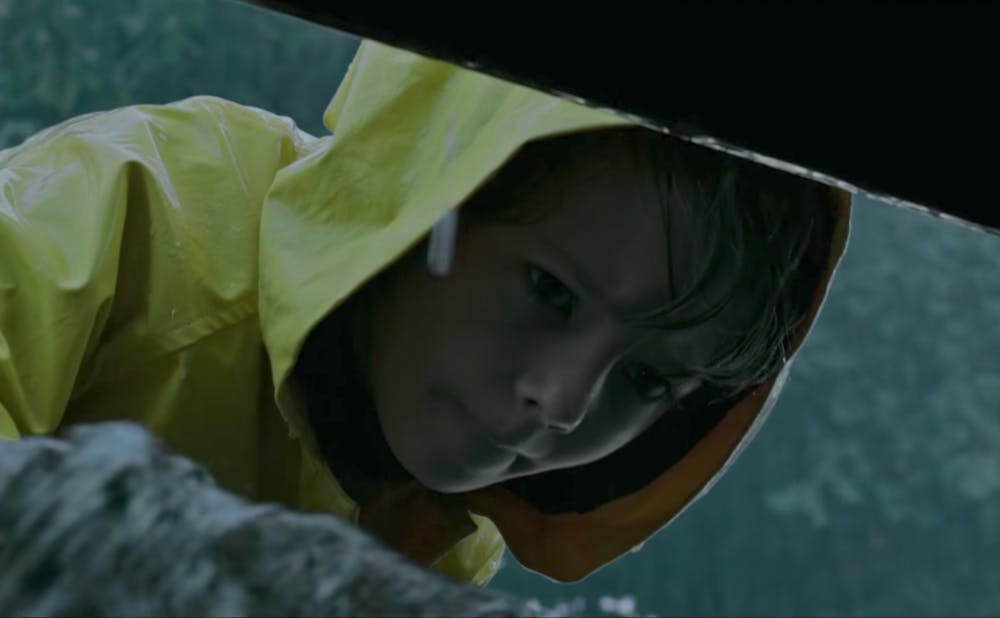In 1990, an entire generation of children was emotionally scarred by Tim Curry’s performance in the miniseries “It.” Those too young to read Stephen King's work or too overwhelmed by the incredible length of his 1986 novel were terrified by Curry’s portrayal of Pennywise the Dancing Clown, one of King’s most enduring and horrifying creations. Even in present times, people still shudder at the memory of Pennywise’s grinning face on television or the cover of a video tape. The long-term impact of the miniseries has raised the question of whether a remake is entirely necessary, especially given the failure of recent remakes to recapture the terror of their originals (like the insipid 2013 reboot of “Carrie”). However, in a world where children still go missing and sewers still bubble insidiously, “It” remains relevant and holds the potential to scare a new generation of moviegoers.
The film takes place during the summer of 1989—as opposed to 1960 in the novel and miniseries, likely to tap into the boom of ‘80s nostalgia following the success of “Stranger Things”—in the small, decrepit town of Derry, Maine. Like most towns in King’s universe, Derry is home to evils on every conceivable scale, from fathers who sexually abuse their prepubescent daughters to child-eating clowns who lurk in the sewers. Stuttering preteen Bill Denbrough (Jaeden Lieberher) lost his younger brother Georgie to the aforementioned sewers a month ago, but remains convinced that Georgie is simply lost and recruits his equally unpopular friends—hyperactive Richie (played exceptionally well by “Stranger Things” alum Finn Wolfhard), pragmatic Stanley (Wyatt Oleff) and hypochondriac Eddie (Jack Dylan Grazer)—to help him find Georgie. Along the way, the quartet saves obese Ben (Jeremy Ray Taylor), home-schooled Mike (Chosen Jacobs) and tomboyish Beverly (Sophia Lillis, channelling Molly Ringwald) from the wrath of the local bullies, prompting the seven to unite under the banner of “The Losers’ Club.” However, they soon find themselves faced by a larger threat than switchblade-wielding bullies, as a malevolent force continues to snatch local children and hunt down the group with the intention of feasting on their fear.
It is difficult to believe that this is only director Andres Muschietti’s second film. His directorial debut “Mama” was a stirring movie that was often as heartbreaking as it was terrifying. Muschietti brings this refreshing approach to “It,” which deftly blends gut-tweaking horror and coming-of-age drama without overindulging the cliches of either genre. However, Muschietti’s excellent direction is eclipsed in places by a clunky script that inflates narrative subtleties—such as Beverly’s abuse—to clownish proportions and incorporates a few too many winking pop culture references and expository monologues to be taken seriously.
Despite clocking in at a whopping 135 minutes—Stephen King is not a man of few words—“It” maintains its momentum due to the frequency and effectiveness of its horror set-pieces. The opening confrontation between Pennywise the Dancing Clown (a jerky, lipsing Bill Skarsgård) and little Georgie sets the stage for a series of spine-tingling appearances from Pennywise and the other forms he assumes, like a rotting leper or, in a stroke of visual genius, a deformed woman from a bizarre painting. Each shape that Pennywise takes is entirely unique and uniformly creepy, but Pennywise himself is still the star here. When not eagerly inviting children into the sewers or leering in the background of antique photographs, he is reaching for children with his Freddy Krueger arms and opening a maw filled with infinite rows of gnashing teeth. Those not already suffering from coulrophobia will leave the theater with a newfound fear of clowns.
However, the most impressive aspect of the movie is its young cast. While diehard fans of the novel might be disappointed by the decision to split the story in half and first focus on the children, “It” benefits from a strong concentration on its adolescent characters. The high level of acting talent prevents the characters from relying too heavily upon their respective archetypes and imbues the story with a youthful sincerity that elevates the clumsy writing. Wolfhard and Lieberher in particular shine in their roles, with Wolfhard spouting clever insults that mask a deep insecurity and Lieberher expertly stammering his way through unresolved trauma. Even the boorish, violent bullies are thoughtfully brought to life by their actors before they start swinging at nerdy kids with switchblades and rocks.
“It” is far from a perfect movie, but after a string of disappointing Stephen King adaptations, it emerges as a rousing success. Faithful to the heart and soul of the novel, but just wise enough to skim the unnecessary fat—readers will be grateful to know that a gratuitous sex scene has been replaced with an innocent love triangle—”It” floats to the upper-echelons of adaptations due to its skilled cast, ambitious direction and an uncanny ability to send a shiver down its audience’s spines.
Get The Chronicle straight to your inbox
Signup for our weekly newsletter. Cancel at any time.

